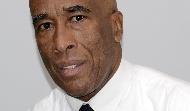In the third article in their series, David Gilbert and Mark Doughty take an in-depth look at the highs and lows experienced by patient leaders

Patient leaders are those who work with and influence others to promote positive sustainable change, new solutions to health challenges and collaborative systems of care. They are everywhere: in the community promoting wellbeing, working with health professionals and organisations to improve services and developing new solutions as entrepreneurs.
Previous articles in this series looked at the need for patient leaders, the challenges they face and the source of their leadership − the learning gained from leading and managing their own health and wellbeing. In this article, we ask some local and national patient leaders what they think about patient leadership.
‘Patient leaders have a key role to play’: Michael Seres

At 12, Michael was diagnosed with Crohn’s disease and underwent more than 20 major operations before developing intestinal failure.
Last year, he became the 11th person to undergo a small bowel transplant at the Churchill Hospital based in Oxford and his life changed forever. He uses social media to mentor patients globally and develop online communities. He has a background in marketing and works at a national level for change.
What do you want to achieve?
To ensure that patients are at the centre of the new NHS, not just on paper but in reality. The combination of new technologies in healthcare and social media interaction enables patient engagement like never before. Patients can make a difference and drive change.
What do you think makes a patient leader successful and effective?
Patient leaders require the ability to engage and build effective relationships. You need to be determined, proactive, passionate and able to roll up your sleeves and work with others and the system. You also need a thick skin! Don’t get too precious. Most importantly, you need to have experience as a patient. Plenty of patients do better work than me across the world and I’m learning every day. Social media enabled me to share my patient experiences to help others and for those others to pass their own experiences down the line. I’m passionate about patient-to-patient interaction and its value in patient care.
One thing you are most proud of
My blog, Being a Patient Isn’t Easy. It started six months before my transplant and a year later got 52,000 people reading it – doctors, medical students and patients. My transplant team use it to keep tabs on me and understand the journey through the eyes of a patient. It’s become the official global patient journey of the Intestinal Transplant Association and has become “syndicated” in patient sites and forums globally. This showed me that connecting patients with other patients was having a huge impact on how they approached their care, complications and successes.
Main barriers
‘There seems to be a lack of desire for change at the pace that us patients want. Nothing is done quickly in the NHS’
The bureaucracy in the NHS. There seems to be a lack of desire for change at the pace that us patients want. There are simple and quick things that could be done and would have a high impact, but nothing is done quickly in the NHS. For instance, every hospital should have a social media strategy for patients. This could be done in a day!
Why are patient leaders needed?
Patient-to-patient interaction is vital in healthcare. The best way for this to happen is through social media. We need patient champions in every hospital, driving this sort of patient interaction.
What are you excited about in terms of patient leadership?
The strain on the NHS is huge. Technology is growing rapidly. Patients are constantly becoming more informed and expecting more involvement. Patient leaders have a key role to play in turning the rhetoric of ‘no decision about us without us’ into reality.
‘You can’t be in it for quick wins’: Nicola Kingston

Nicola has been involved with the NHS since her son was diagnosed with diabetes at the age of one, and she also became a carer. After working in housing, she then worked on the Expert Patient Programme, and moved into public health. She became involved with local involvment networks and is now co-chair of the Lambeth branch in London
What do you think makes a patient leader successful and effective?
Resilience. It’s a long game and you can’t be in it for quick wins. Health and social care is so complex, particularly now, so it’s really important to get training and development for patient leaders – and we need to campaign for that. Build strong ties to the voluntary sector, and keep on top of things.
Main barriers
The sheer complexity of everything now, and the time being spent on reorganisation, threatens the loss of focus on what matters. We just don’t know where the push for involvement will come from.
There is an overwhelming desire to achieve budget reductions from short-term measures, without building the self-care skills and community assets that will prevent demand rising and will bring long-term financial benefits.
Why are patient leaders needed?
Because services need to become more patient- or user-centric, that does not mean doctors speaking for patients. It means patients speaking for themselves. The whole theme of shared decision-making and self-care is hugely underdeveloped and we need patient leaders to push the whole future of the NHS to involve people in their own health and social care.
What are you excited about in terms of patient leadership?
‘There are huge opportunities and needs for networking’
We are co-producing Healthwatch Lambeth with our council and CCG, which is truly innovative. There are huge opportunities and needs for networking now. For this to happen, there needs to be proper support and development that provides ways of bringing all sorts of patient leaders together eg HealthWatch representatives, CCG lay members and hospital governors, but also with other types of people, such as councillors and academic groups.
What do you want to achieve?
I would love for Lambeth to be seen as the leader in bringing co-production and community assets into the work of the health and wellbeing boards.
‘I’m proud to have highlighted the postcode lottery’: Patrick Ojeer

After one of his sons was born with Sickle Cell Disorder, Patrick became aware of the lack of knowledge and management within the NHS. He gave up his engineering career to care for his son and after getting involved with a local support group, he has worked on a wide range of improvement projects, particularly around specialised commissioning. He is fellow at the Collaboration for Leadership in Applied Health Research and Care and was recently interim operations manager at the Sickle Cell Society
What do you want to achieve?
I want to see that standards of care do not sit on a shelf. But implementation is the biggest hurdle - so that service users notice the difference. I want to know that, as a carer, we have influenced change that is sustainable.
What do you think makes for an effective and successful patient leader?
You need to keep focused on the patient perspective and know what you want to achieve, rather than promote your own agenda. The skills to navigate the landscape are crucial – how to manoeuvre throughout the system and engage with lots of different people, clinicians, commissioners, and users. You are a linguist, able to speak and be comfortable with several ‘languages’. Always be ready to upgrade your skills and understanding. Find ways for people to understand the nature of the disease and overcome ignorance.
What one thing are you most proud of as a patient leader?
I feel I have put sickle cell on the national agenda. I’m proud to have highlighted the postcode lottery and poor access and standards of care. This has led to haemoglobinopathy being commissioned at national level.
What are the barriers?
There’s always a barrier. You get immune. You just have to overcome them, but you do need confidence and resilience. Particular ones include getting users to be involved as well as stigma. Some families don’t want to know. In education, you need to explain how the authorities can help. It’s the same in employment. GPs see few cases of sickle-cell. And in crisis, people go straight to hospital. GPs could do much towards prevention, but it’s hard when they are blind to the situation.
‘There’s always a barrier. You get immune. You just have to overcome them’
The next big challenge is to make the changes stick. On a personal level, I’d like to be more valued and get paid, for a change, for my expertise and contribution.
Why do you think the NHS needs patient leaders?
Without patient leaders, how else will you know what’s needed? Not everyone has the skills to look at the bigger picture. But if we want to have patients at the centre, then you need patients at the centre of strategic decision-making too.
What are you excited about in terms of the future of patient leadership?
I can see things are gradually changing. How far we can go remains to be seen. I understand the financial constraints. But there are opportunities. It’s odd that there is not yet a place at the highest levels for us, for example the NHS Commissioning Board. Why not?
‘My vision is a quiet revolution’: Alison Cameron

After a successful international development career, Alison was diagnosed with post-traumatic stress disorder following an accident in which her colleagues were killed. Building on her experiences of using and identifying gaps in services, she became a mental health advocate and governor of a trust. She now has various national roles, beyond mental health. She is developing numerous projects on coproduction and has just been awarded a fellowship at Imperial College London/National Institute for Health Research looking at engaging with so-called “hard to reach” people in health and social care services
If you were to give one piece of advice to patient leaders, what would it be?
Leadership starts from within. From there comes the resilience needed to keep motivated despite the barriers and realise that sometimes it’s two steps forward one step back. Take small steps. I started by making observations about gaps I saw in services for those with dual mental health and substance misuse issues. I then got asked to do more and more.
One thing you are most proud of?
I came from a place of passivity and self-stigma. But I have become proactive and been able to sow seeds of change in the minds of people, often with hitherto entrenched positions and resistance to allowing the likes of myself out of their boxes.
What have the main barriers been?
‘I fight against the “service user” label, but it holds a familiar security’
To be on equal terms with paid professionals requires the courage to say: “If you truly value what I bring, show that tangibly”. Professionals seem wary of working with competent, forthright patient leaders. But self-doubt in my own abilities, created by the system, is a challenge. I fight against the “service user” label, but it holds a familiar security. I need to reflect constantly on my own practice to challenge this self-stigma.
What do you want to achieve?
Patient leadership is about social justice – championing our right to full participation in society. It’s not about the kudos of belonging to a narrow group of ‘representatives’.
If people are seen as assets, the most ‘seldom heard’ can be effective leaders. Professor Edgar Cahn in No More Throwaway People said: “No more ongoing dependency as the implicit price for receiving help.”
So my vision is a ‘Quiet Revolution’, with Glasnost openness in NHS and social care institutions, then Perestroika reconstruction that enables patients to use our skills to design, implement and sustain the services we use. This should be the norm that is welcomed, not feared!
Why are patient leaders needed?
With spending cuts and rising service demand, we need new approaches. Current models in care still focus on “needs” over seeing people as “assets”. People like me, rendered passive by having an identity subsumed by a diagnostic label, possess a huge wealth of skill and assets going to waste. Working in equal partnership enables patients and professionals each with their own perspective to find creative solutions. This will save money.
What are you most excited about in terms of patient leadership?
This is a time of uncertainty and a degree of chaos in the NHS and public services in general. The best creative thought and innovation seems to occur under such conditions. I am excited to be part of a growing movement of patient leaders who share a vision which goes well beyond the safe and staid traditional “PPI” world and are hellbent on using this opportunity to bring about real change.
Who is your leadership role model and inspiration?
My confidence originally came from hearing Dr Rachel Perkins speak of how her own experiences of mental health issues actually opened doors for her. This inspired her, and now me, to start speaking up.
‘Institutional thinking must change’: Paul Buchanan

Paul is an insulin-dependent type 1 diabetic. Initially misdiagnosed by his GP and demanding a referral, he turned to the internet for answers. He discovered too many other stories like his, plus a wealth of information, experience and an online community. He was determined to set up a resource in the UK to help others. He took his first insulin injection on 26 January 2012
What do you think makes a patient leader successful and effective?
Patient leaders intimately understand the nature of their condition. They are able to be objective, empathise with peers and issues that might arise for them and effectively communicate this to a wider range of stakeholders. They proactively advocate on behalf of others and do not get caught up peddling a personal agenda, being able to think strategically and work within existing structures.
One thing you are most proud of
I founded the patient-led online peer support tweet chat, #GBDOC on August 15 2012. Fourteen weeks later it had more than 600 contributors from 14 countries. I have now set up local language versions in five other countries, reaching an audience of eight million.
Main barriers
‘Institutions that provide services are themselves the problem. They are hierarchical, bureaucratic and paternalistic’
Institutions that provide services are themselves the problem. They are hierarchical, bureaucratic and paternalistic. They seem to actively resist change at an institutional level, despite the desires of the majority of professionals within them. They are enormously difficult to navigate and understand and clearly not ‘designed’ for service users to play any active or meaningful role.
What do you want to achieve?
I want to create an informed, educated and empowered patient community that is capable to engaging with the health care professional to achieve the best quality of life and the best outcomes achievable with the tools and services available.
Why are patient leaders needed?
If we are to achieve patient-centred and patient-led services, “no decision about us without us” needs to be meaningful and embedded. It needs to be the “golden thread” that runs through the entire service.
What are you excited about in terms of patient leadership?
Technological advances and social media have created an opportunity for change of a hitherto unimaginable scale. There is a very real chance to make fundamental changes to the way institutions operate, communicate and behave, internally and externally. Those who ‘get it’ will adapt and thrive. Institutional thinking must change.
Who is your leadership role model, or inspiration?
I am inspired by models like the transition town network – devolved, local leadership with the aim and ambition of creating meaningful, sustainable change from the grass roots up.
‘Design for all’: Denise Stephens

Denise Stephens is founder of Enabled by Design, a social business and community of people passionate about design for all. They believe good design can support people to live as independently as possible, by helping to make day-to-day tasks that little bit easier
What do you think makes a patient leader successful and effective?
I never used to see myself as a leader, more of a follower. But this sort of leadership – where you involve others – is both. Empathy is key. It’s important to be able to walk in other people’s shoes and bring your own experiences together with those of others. I talk to lots of different people, so need to be reflective and join up knowledge.
Communication is two-way; listening, being approachable and constructive. It’s not about “broadcasting” or “throwing stones”. Language is important. I once came across the OXO Good Grips Y-peeler, a well-designed vegetable peeler based on universal design and thought “why can’t everything be designed like this?” Not everyone knows the term universal or inclusive design, both are similar, so I prefer “design for all”.
If you were to give one piece of advice to patient leaders, what would it be?
‘Others may be right; I don’t know everything! But resilience is crucial’
Try to balance your health and workload. If you don’t rest, then you might not be able to carry on. I’m still struggling with this. I don’t want to let people down. It’s a hard job with lots of demands. You can’t keep everyone happy. Don’t take disagreement personally and use learning where possible. Others may be right; I don’t know everything! But resilience is crucial. Innovators may get negative feedback as they often pose a threat to traditional ways of working.
Main barriers
I used to get stressed about public speaking, which had a knock-on effect on my MS symptoms. Now the challenge is finding that all-important business model that allows us to cover running costs and build capacity. We’ve made start-up funding go a long way. But finding time to take stock? I’m so busy, there seems little time to reflect.
What do you want to achieve?
I want well-designed assistive technology and products that support independent living – good design that’s functional and pleasing. When my MS symptoms worsened, I became surrounded by ugly assistive technology. I thought: Does it have to be like this? I sought nicely designed stuff and shared what I found. Our vision of a ‘design for all’ philosophy is about how things can be used by as many people as possible without need for adaptation.
Why are patient leaders needed?
People in organisations can adjust to jargon and structures and start to think in a certain way. Patient leaders bring a different perspective and can bring much needed challenge. They can be trusted brokers and intermediaries.
What are you excited about in terms of patient leadership?
Patient leaders could play a range of different roles – adviser, entrepreneur, community leader – but the role needs development, recognition and money.
Your role model
Jane Ni Dhulchaointigh, founder and inventor of Sugru (a self-setting rubber for fixing and modifying stuff), has developed a product and business while building an active community. They’ve reached 155,000 people in 119 countries. She had the idea, made it happen and engaged a global community. That takes passion, resilience and a hell of a lot of hard work to stick with it.
Find out more
David Gilbert and Mark Doughty are co-directors at the Centre for Patient Leadership
Topics
The quiet revolutionaries: patient leaders
- 1
 Currently reading
Currently readingThe quiet revolutionaries: patient leaders
- 2
- 3
- 4
- 5






























No comments yet